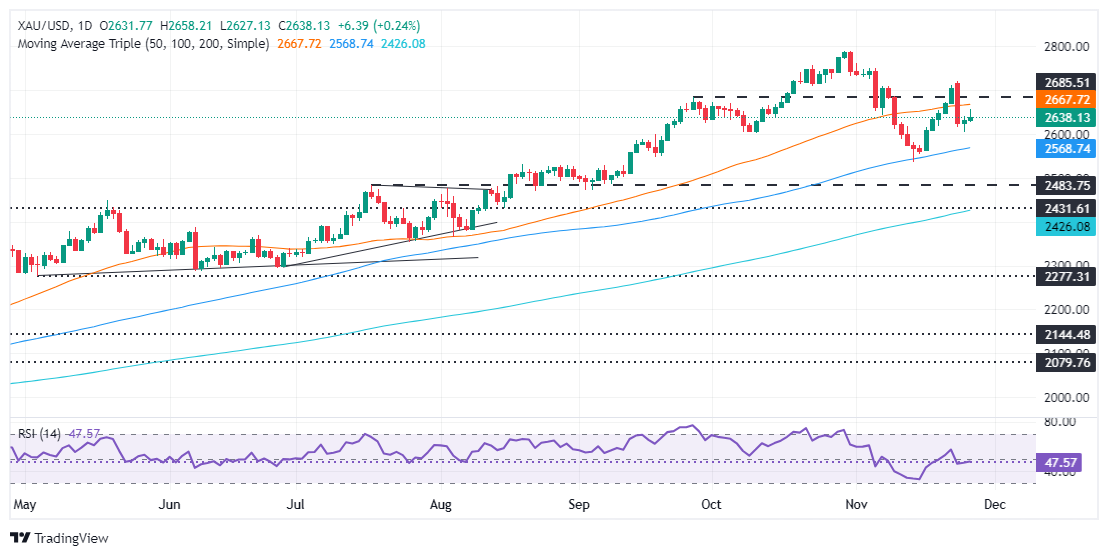Other data showed that the economy remains robust after the release of the second estimate of the third quarter’s Gross Domestic Product (GDP). At the same time, jobs data revealed that the labor market remains strong as the number of Americans applying for unemployment benefits dipped below estimates.
Following the data, US Treasury bond yields fell, dragging the Greenback lower. The US Dollar Index (DXY), which tracks the performance of six currencies against the buck, tumbled 0.78% to 106.04.
Bullion prices recovered despite Lebanon and Israel agreeing on a ceasefire. Nevertheless, the escalation of the Russia-Ukraine conflict could keep buyers leaning into the non-yielding metal, which posted weekly losses of over 2.90% despite advancing on Wednesday.
According to CME FedWatch Tool data, markets now see a 70% chance of a quarter-point rate cut in December. The non-yielding metal shines in lower interest rate environments.
Daily digest market movers: Gold prices fluctuate near $2,630
Gold prices recovered as US real yields dropped six basis points to 1.966%.
US Durable Goods Orders rose by 0.2% MoM in October, missing the 0.5% forecast but improving from September’s -0.4% decline.
The second estimate of US GDP growth for Q3 came in at 2.8% QoQ, meeting expectations but below the 3% growth recorded in Q2 2024.
Initial Jobless Claims for the week ending November 23 remained steady at 213K, below the projected 217K.
Core PCE increased by 2.8% YoY in October, in line with expectations and slightly above September’s 2.7%.
Data from the Chicago Board of Trade, via the December fed funds rate futures contract, shows investors estimate 24 bps of Fed easing by the end of 2024.
Technical outlook: Gold price advances modestly, clings to $2,630
Gold’s price is neutral to downwardly biased after sellers pushed Bullion below the $2,700 mark. Although the golden metal pushes higher on Wednesday, the XAU/USD is carving out a series of successively lower highs and lower lows. However, if bulls reclaim the 50-day SMA at $2,667, this could pave the way to challenge $2,700, the psychological $2,750, and the all-time high at $2,790.
Conversely, If bears push prices below $2,600, it will open the door to testing the 100-day SMA of $2,568, immediately followed by the November 14 swing low of $2,536.
Oscillators like the Relative Strength Index (RSI) have shifted bearishly, indicating sellers are in charge.

